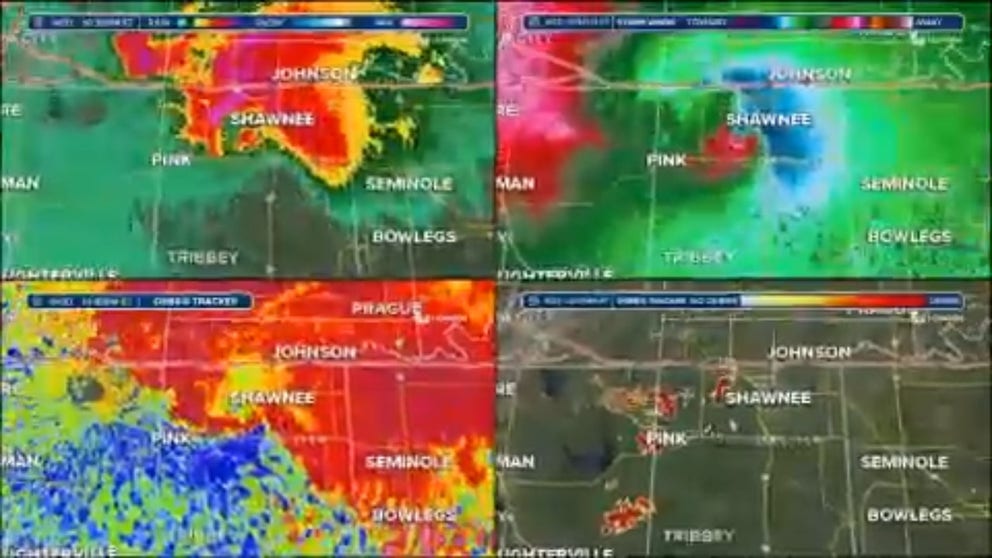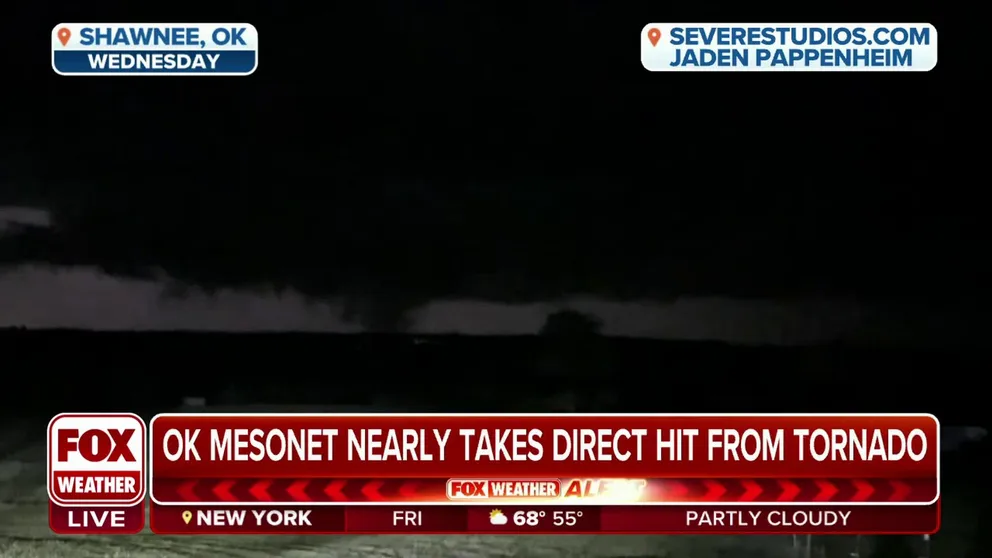Shawnee, Oklahoma, tornado features 2 rare meteorological phenomena
The first involved the tornadoes taking a dangerous detour; the second showed two areas of rotation that began spinning around each other, like two figure skaters going in for a hug.
Doppler Radar loop of tornadoes that hit Oklahoma
A loop of Doppler Radar's storm winds that show rotating cells become affected by the Fujiwhara Effect and make an abrupt change in direction on April 19, 2023.
SHAWNEE, Okla. – A supercell that spawned a long-track, deadly tornado that tore across Oklahoma on Wednesday exhibited two rare meteorological phenomena, according to the FOX Forecast Center.
The first involves the tornadoes taking a dangerous detour.
3 KILLED AMID OKLAHOMA'S DEADLIEST TORNADO IN 10 YEARS
Typically, tornadoes move from west to east or from southwest to northeast as they track along their supercell's path.
But Wednesday's tornadoes bucked the trend, making a sharp turn to the north, known as "deviant tornado motion."
3-D Radar view of deadly Oklahoma tornado
FOX Weather radar imagery goes inside the supercell that spawned a tornado that swept through Cole, Oklahoma on April 19, 2023.
"This is simply defined as when a tornado takes a completely different track than what we usually see," FOX Weather senior meteorologist Jordan Overton said. "Deviant tornado motion is when a tornado takes a hard left turn, remains stationary or rapidly changes directions. These are typically strong tornados and can cause high-end impacts, which is what we saw (Wednesday) night."
THIS IS THE LIFECYCLE OF A TORNADO
The erratic motion adds another level to the dangers of tornadoes, making their paths unpredictable and could leave those who originally thought they were safely out of the twister's path instead in the middle of the approaching storm.
Storm cells go for spin around each other
Oklahoma Mesonet has close encounter with tornado
Oklahoma State Climatologist Gary McManus weighs in on the damage near the Oklahoma Mesonet after a tornado ripped through the area Wednesday night
As the cluster of supercells moved toward Shawnee, Oklahoma, two areas of rotation began spinning around each other, like two figure skaters going in for a hug.
The phenomenon is known as the Fujiwhara Effect and can be seen when two cyclonic systems drift near each other.
"This is more common with hurricanes, but it can happen on a small scale, such as tornadoes," Overton said. "The stronger spin 'wins' the battle, and eventually either pulls the smaller spin into it, or the smaller spin dissipates or swings off in a direction outside the main spin of both."

Doppler radar analysis of a tornado that swept through Oklahoma on April 19, 2023.
(FOX Weather)
In this case, Doppler radar imagery suggested the supercells briefly spun around each other and were sent away in different directions before dissipating within an hour.
Having either deviant tornado motion or cells engaging in the Fujiwhara Effect is unusual, but to have a storm system involve both is quite rare.
"(Wednesday) night's storm will be studied and then studied again, and we will likely see it in textbooks within the next couple of years," Overton said.


